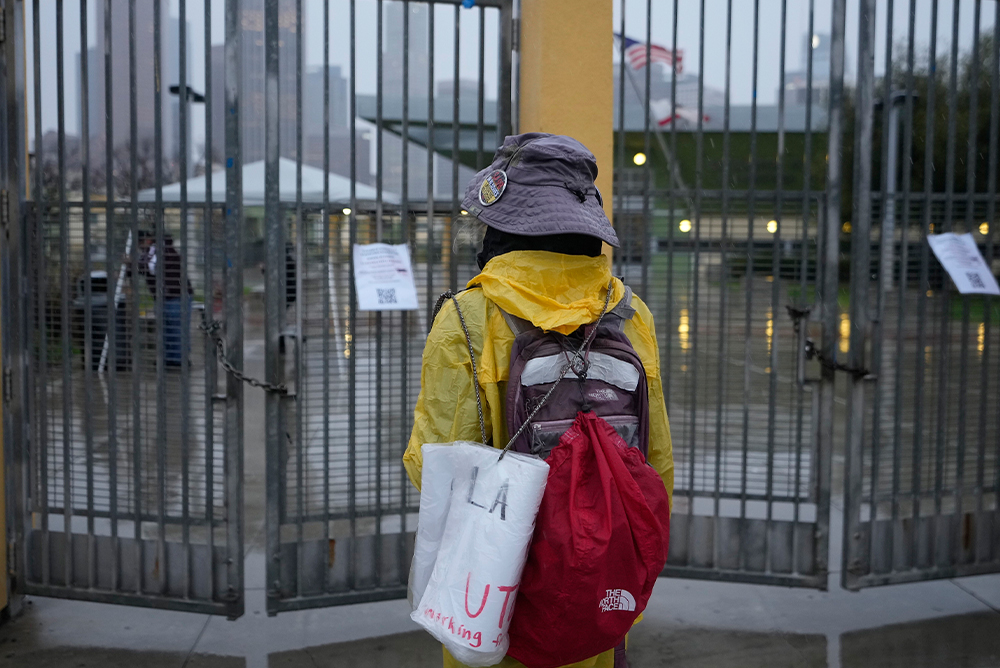
Unless parents and administrators get serious about putting an end to the crisis of school closures, kids will continue to suffer, columnist Joe Mathews argues. Courtesy of AP Newsroom.
We may have very good reasons to close our local K-to-12 schools for a day or two, or even for a week.
But we should keep them open anyway.
That’s because, in California, we are closing schools so routinely that we’re harming children who are already in crisis. We’re also further diminishing trust in public education and reinforcing low expectations and encouraging continuing disinvestment in the state’s future.
The closures aren’t just a hangover from the pandemic, when our communities, backed by state government and unions, kept schools closed far longer than most other American states. The closures reflect deeper problems in the state and our society.
Indeed, school closures began surging before the pandemic. An indispensable CalMatters database of school closures, published in 2019, found big increases in the first two decades of this century. Most of the closures were in response to wildfires or dirty air, and those closures were growing longer with the size of the fires. CalMatters found that dozens of schools lost 15 days or more in a single year to wildfires. (California mandates a 180-day school year.)
Hundreds of closures were the results of threats of violence to schools, with parent fears sometimes forcing closures in response to threats not deemed credible. And CalMatters identified more than 370 closures because of disrepair or campus maintenance failures—often involving plumbing. All told, in recent years as many as one in five California students lost school days to emergency closures.
More recently, school closures have been occasioned by this winter’s wet weather, and by shortages and conflicts involving the pandemic-ravaged ranks of teachers and school staff. The recent three-day closure of Los Angeles Unified schools, occasioned by a strike by the district’s lowest-paid employees, is only one example.
The only thing worse than all the closures is the way we’ve begun to accept these shutdowns. Indeed, media coverage celebrated the L.A. schools strike as a demonstration of worker power. And the resulting closures were mentioned mostly for their impact on families, as if the main role of schools is to provide child care for parents.
But schools are for children and the essential work of education. And our kids badly need schools that are reliably open, with teachers and staff reliably present, every single day.
No matter what.
You may think that’s an extreme position, but it’s less extreme than the problems kids are facing. These include an epidemic of loneliness, a mental health crisis, and substantial declines in student learning.
Twin facts exacerbate all of these crises: Schools are too often closed, and when they are open, too few students are present. Chronic absenteeism—when a student misses at least 10% of school days—has become commonplace in California and around the country, doubling during the pandemic. For the 2021–22 school year, chronic absenteeism hit 30% statewide. For Black students, the rate was 42.5%. A new PACE analysis projects such attendance problems persisting into the future.
The absenteeism has been accompanied by big drops in student enrollment. California public schools lost 110,000 students last school year, and the state Department of Finance has projected the loss of another 500,000-plus students by 2030–1. The drop in enrollments is already forcing the permanent closure of campuses in every region. Those projections make clear that the future of public education itself is in doubt.
And the strongest possible response is to make it the law that, in California, schools will always be open, because they are that important.
That is easier said than done, but setting a clear rule is the crucial first step in driving the investment necessary to make schools so resilient they never have to close.
Keeping schools consistently open will involve far more than just schools themselves, because closures are related to huge problems—climate change that produces bigger fires and crazy weather, digital media that make it easier to convey threats, the violence and omnipresence of guns in our society, and our failure to build and maintain infrastructure.
Right now, and without delay, the state and all its communities need to harden their campuses for this apocalyptic age. And we need not just better pay for school staff—the point of the L.A. Unified strike—but comprehensive support and services (like child and elder care) for the families of teachers and employees, so that they have no reason not to go to work.
Ending school closures is not just the work of school administrators. Californians, especially parents, need to stop pressing for school closures and start getting their children to school every day. And the state needs to increase funding and apply fiscal pressure and oversight to prevent closures. I’d suggest a new two-to-one rule; for every day a local school or district closes, it has to add two additional school days to the calendar, which come out of its own budget.
Most of all, keeping schools open requires a shift in mindset. The fires and storms and threats we think of as emergencies are no longer emergencies—they are the new normal, and they may well be with us for the rest of our lives. Instead, we must recognize that school closures—and the attendant damage to children and education—are the real emergencies.
And they are emergencies we have the power to prevent.




Send A Letter To the Editors